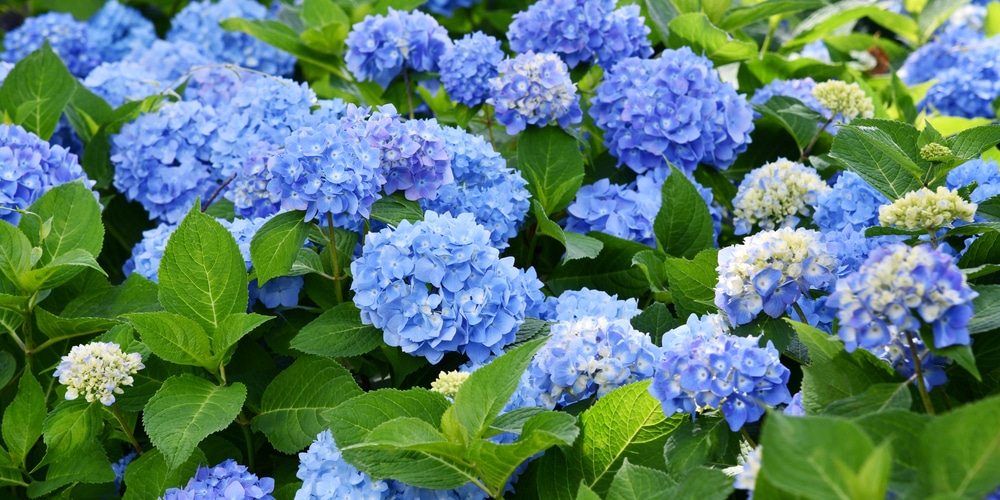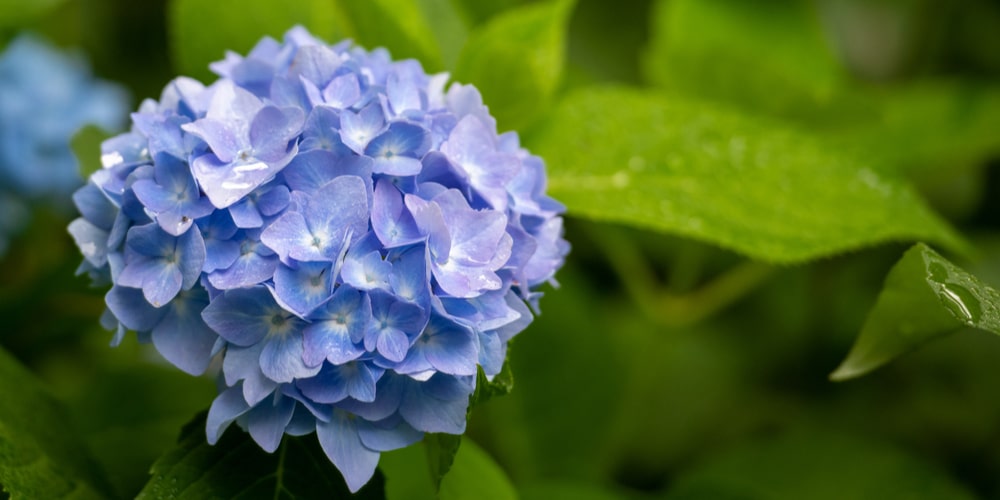A healthy and flourishing shrub can bring any garden to life with its beautiful, large blooms. If you’re looking for a hardy, low-maintenance shrub to add to your garden, look no further than the Hydrangea Penny Mac. This tough little plant has been a popular choice for gardens for decades.
| Botanical Name | Hydrangea Macrophylla ‘Penny Mac’ |
| Common Name | Hydrangea Penny Mac |
| Plant Type | Perennial |
| Flower Color | Purple, Blue |
| Size When Mature | 60 inches |
| Bloom Time | Summer to Fall |
| Sun Requirements | Partial Sun |
| USDA Hardiness Zones |
5-9 |
| Soil PH Range | 5.5-8.4 |
| Soil Type | Acidic, Neutral, Alkaline, Well-draining |
| Water Needs | (Medium |
| Native Area | North America |
What You Need to Know About Hydrangea Penny Mac
The Hydrangea Penny Mac is a native of North America known for its showy flowers and its easy care requirements. This deciduous shrub is a member of the Hydrangeaceae family and can grow to be up to 60 inches in height.
The leaves of the plant are large and oval-shaped, with a toothed edge. The underside of the leaves is typically a lighter shade, and the veins are distinctly visible. The leaves are approximately 6 inches long and 4 inches wide, and they are arranged in pairs along the stem.
The flowers of the plant are purple-ish blue and extremely fragrant. They typically bloom from summer to fall, but they can also bloom sporadically throughout the year. The flower heads are approximately 3 inches in diameter, and each head contains dozens of small flowers. The blooms are short-lived, but they are incredibly beautiful while they last.
Caring for this plant is relatively easy, and it is very tolerant of different climates and soil types. If you’re looking to get started with gardening, this plant is great to start with.
How to Care for Hydrangea Penny Mac
Here’s everything you need to know about planting and caring for a thriving Hydrangea Penny Mac:
Light
One of the most important things to remember is that this plant prefers partial sun. Too much direct sunlight will cause the leaves to scorch, so it is best to place the plant in an area that receives morning sun and afternoon shade.
If you live in a climate that is particularly hot, it is best to place the plant in an area with dappled sunlight or filtered sunlight. This will help to protect the leaves from scorching and will prevent the flowers from fading.
Water and Soil Needs
The first step to keeping your plant hydrated is making sure it gets enough water. These beautiful blooms need at least 1” of water per week, so be sure to keep an eye on the soil and make sure it’s not drying out. During hot summer days, you may need to water more often to prevent wilting.
The plant prefers rich, loamy soil that is high in organic matter with a pH range of 5.5-8.4. If your soil is sandy or clay-based, you may need to amend it with some compost or peat moss before planting.
Temperature Requirements
In order to maintain the ideal temperature for your plant, it is important to know what that ideal temperature is. This plant is hardy in USDA zones 5-9 and prefers temperatures between -20°F and 30°F.
If the temperature falls below -20°F, the leaves may start to turn brown around the edges. However, if the temperature rises above 30°F, the flowers may start to wilt. As a result, it is important to keep an eye on the temperature and make adjustments as necessary.
Fertilizer
The best fertilizer to use on a Hydrangea Penny Mac is a slow-release fertilizer with a high Phosphorus content. This will help to encourage strong root growth and promote the development of healthy flowers.
The best time to fertilize your plant is in early spring, just as the new growth begins to appear. You can also fertilize again in mid-summer if the plant looks like it needs a boost. Be sure not to over-fertilize, as this can damage the roots and leaves of the plant.
Common Diseases
Hydrangeas are susceptible to a few different diseases, the most common being powdery mildew, leaf spot, and root rot.
The white or gray fungus that appears on the leaves and stems of the plant is a sign of powdery mildew. Leaf spot on the other hand is a brown or black fungus that affects the leaves, causing them to turn yellow and drop off. And finally, the most serious disease is root rot as it can kill the plant. It is caused by overwatering, so be sure to water only when the soil is dry.
Hydrangea Penny Mac Propagation
The easiest way to propagate Penny Mac is by taking stem cuttings from an existing plant. Cuttings should be taken from new growth that is about 4 inches long. The cuttings can then be planted in a pot filled with moist potting mix. Once the cuttings have taken root, they can be transplanted into the garden or landscape.
After a few weeks, you should start to see new growth in the plant. Once the plant has become established, it will start to produce flowers.


